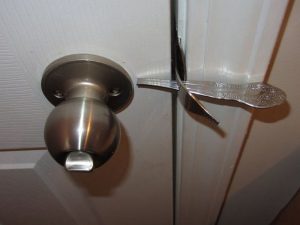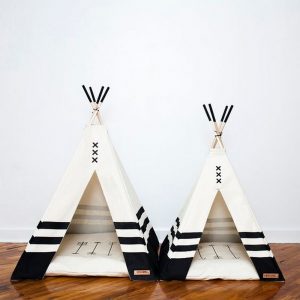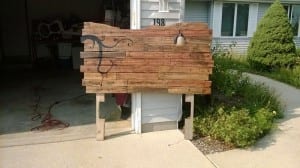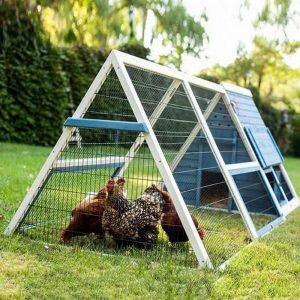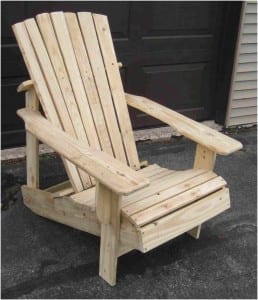Drilling the Drum
Once the exterior paint has been removed, measure and make small marks where the holes will be drilled. The holes should be drilled with a step bit, large enough to allow the ¼-inch diameter bolts to fit through, but not so large that the head of the bolt will slip through.
Drill four holes, equally spaced, seven inches below the top of the drum. This is where the cooking grate will sit. Drill four additional holes 12 inches from the bottom of the drum. This provides the flexibility of adding a lower grate, which can be used for higher heat (closer-to-the-flame cooking), or even for holding a drip pan or heat deflector if you choose.
Drill three equally spaced holes three inches from the bottom, large enough for the ¾-inch pipe nipples and ball valve to be inserted securely.
For the exhaust, the easiest setup involves evenly spaced holes in a circular pattern around the drum lid, as opposed to a single larger hole with a chimney tube attached. This minimizes any chimney effects, which can increase draft and create hot and cold spots and an overall hotter fire. For this exhaust pattern, drill eight equally spaced one-inch holes a few inches from the edge of the lid.
An easy way to get this right is to place eight coins in a circle around the lid and then measure the distance between them. Slightly move each one until the distance between each coin is equal. Then remove each coin one by one and drill the holes. Depending on the type of handle and smoker thermometer you find, drill an appropriate number of holes to attach both.
After all of the holes are drilled into the drum, remove any leftover steel shavings that might have fallen into the inside of the drum. Use painter’s tape and cover all of the holes you drilled from the inside. This will prevent spray paint from contacting the inside of your drum.
Use high-heat engine paint, as this has been rated upwards of 500 degrees F. Spray paint the entire outside of the drum, including the bottom and the lid. Allow the paint to dry completely.
After the paint has dried, insert the one- and half-inch bolts and tighten them with the lock washers and nuts. Attach the ball valve and pipe nipples, and secure with ¾-inch conduit nuts. Finally, attach the lid handle and secure it with the necessary hardware, then install the thermometer.

No-Weld Charcoal Basket
Most of us don’t have access to a welding machine. In this case, we can do a “no weld” charcoal basket made from a sheet of expanded steel bent into a circle and secured with bolts, flat washers, and nuts. The circular basket is then secured to a typical charcoal grate and hex bolts are used as “feet” to let the basket stand on the bottom of the drum.
Begin with a 45-inch-by-9-inch sheet of nine-gauge expanded steel. If you can, have your steel fabricator bend this into a circle for you. If not, grab a propane tank and slowly bend the steel sheet around the tank until a circle is formed. The no-weld concept comes from attaching components via nuts, bolts, and flat washers.
Once the expanded steel is bent into a circle, insert a bolt with a large flat washer through two overlapping steel apertures (one from the original left and one from the original right side of the steel sheet) and quickly place another large flat washer and lock nut on the other side of the sheets. Once this is done, the steel will remain secure.
Do this twice at different locations on the steel sheet. This circular basket will now be able to sit on a charcoal grate, which will be attached to 3.5- to 4-inch hex bolts. To attach the hex bolts to the charcoal grate, place a nut and flat washer on the hex bolt and insert it through the charcoal grate. Once the bolt is through the grate, use another flat washer and lock nut to secure it to the grate.
The flat washers essentially “sandwich” the grate, and the nuts keep it tight. Attach the grate to the circular expanded steel with two U-bolts. Slip the “U” portion of the bolt through the expanded steel aperture and then fasten it to the grate.


